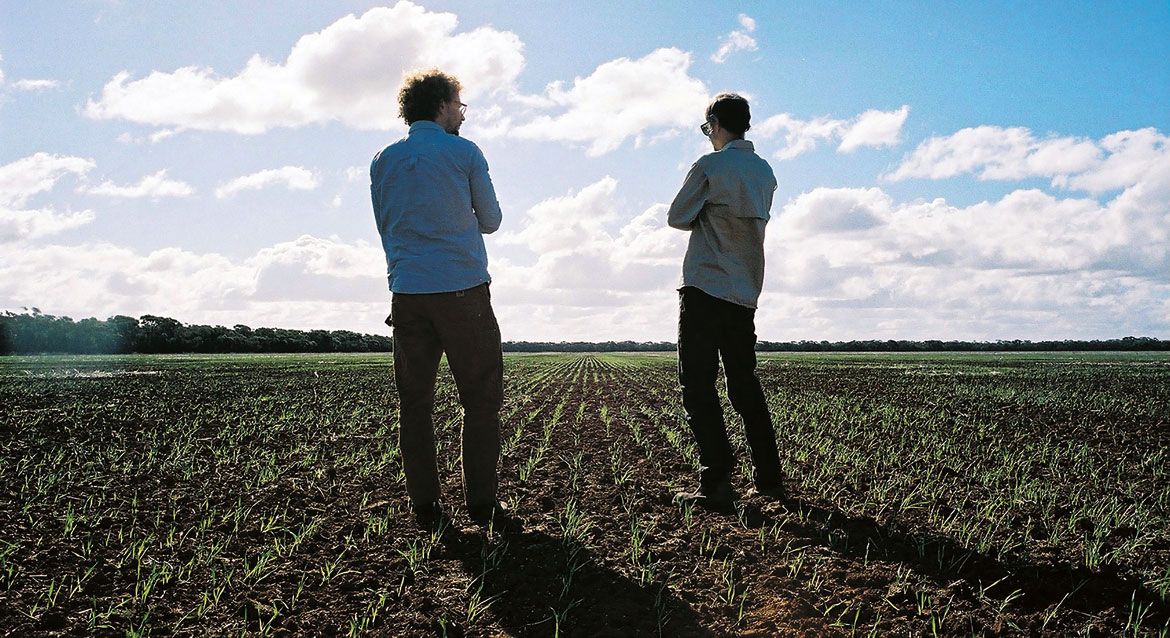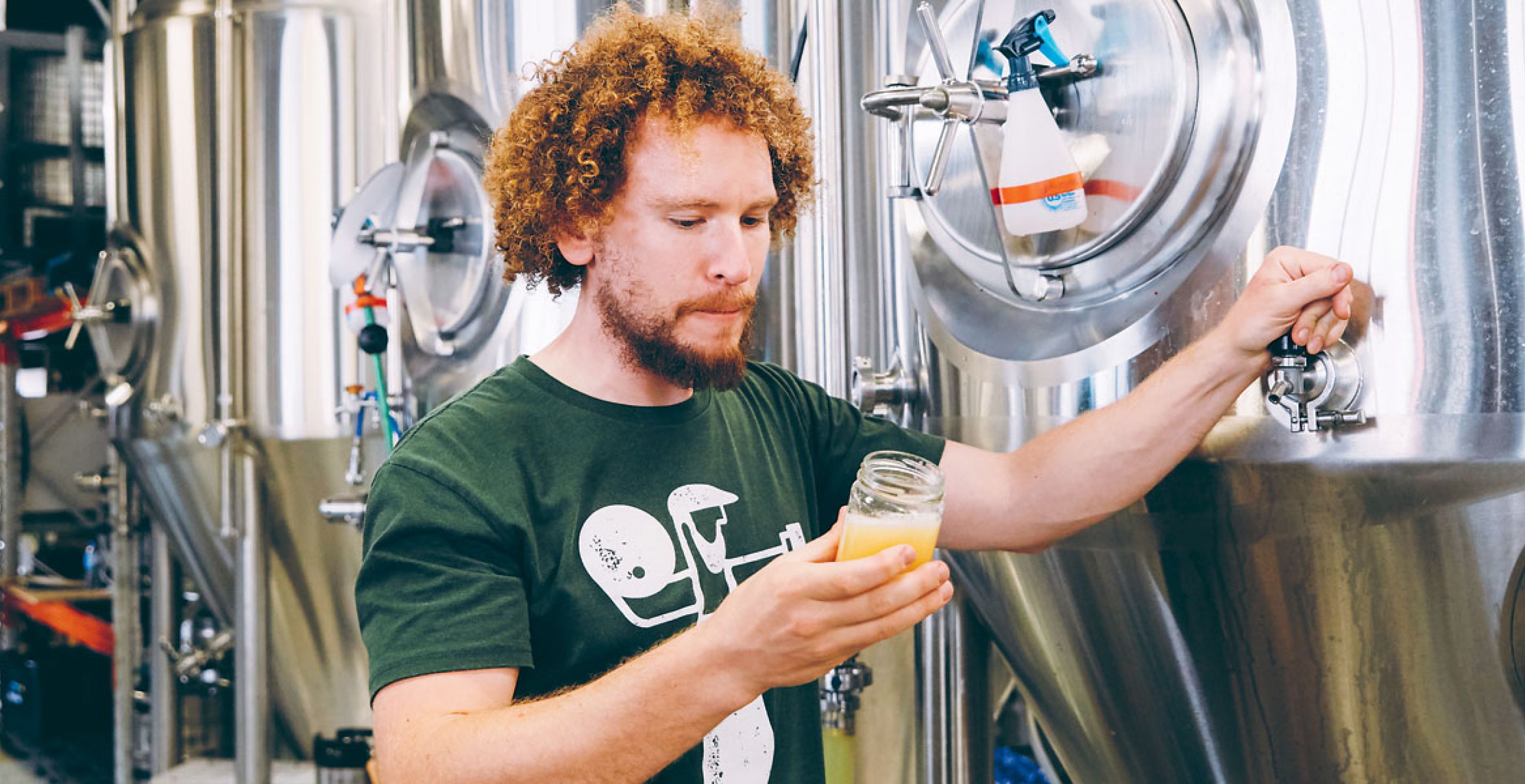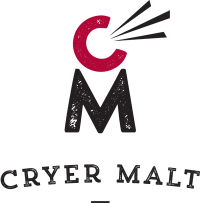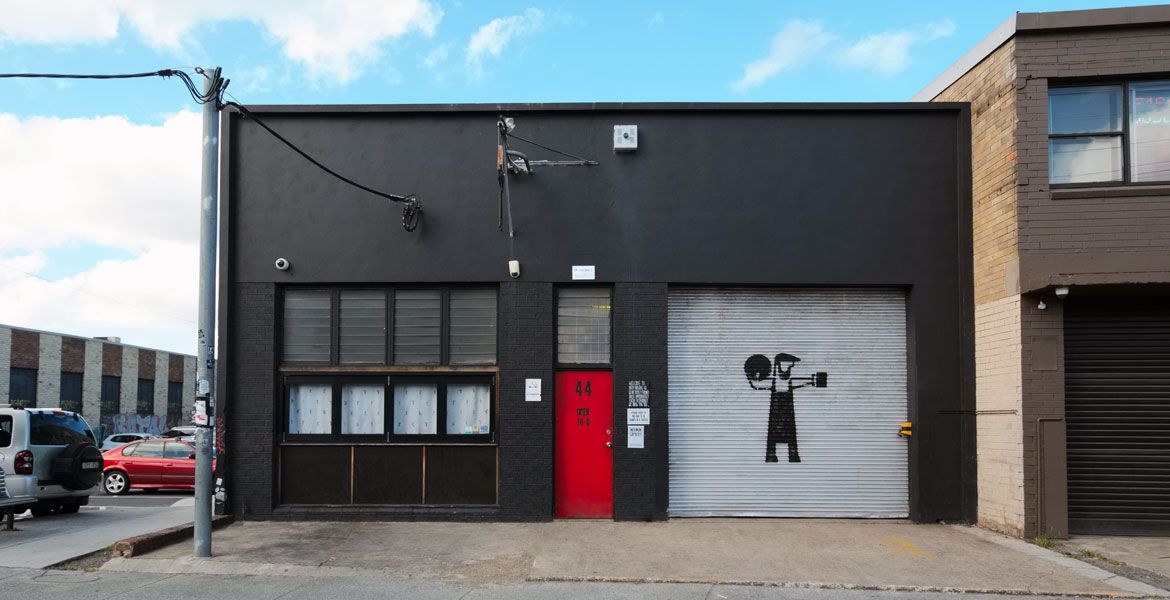Towards the end of Brew A Batch, a new homebrew manual for beginners, author Chris Sidwa suggests readers bring along a bottle of their own brew next time they drop into his workplace, Batch Brewing Co in Sydney’s craft-soaked Inner West. Not wanting to disappoint, your extremely unreliable narrator faithfully poured off a bottle of homebrewed Tmavé Pivo (Czech Dark Lager), brewed exclusively with ingredients from New Zealand, and promptly left it on the kitchen bench on the way to carry out this interview.
It proves one of many points Chris makes in the book: that every beer has its own story. Even if it’s not always a particularly good one.
Chris has been homebrewing for 15 years and, lucky for you, he’s made and learned from every mistake a homebrewer can make. In his stylish and detailed new book on homebrewing for beginners, Chris has also distilled the ethos, skills and experience that has made Batch one of the darlings of the Sydney craft beer scene.
Working with publisher Murdoch Books, which specialises in lifestyle books, it's an aesthetically bright and vibrant guide, one with a visual appeal not unlike a cookbook, packed with great imagery as well as Chris' words. Homebrewer Judd Owen joined him (without dark lager) to find out more.

In your introduction you talk about the reasons why people might like to start homebrewing. One of which is trying to create beers that you just can’t get access to for whatever reason. For me personally, this did play a big part in getting into brewing but, with the increasing range of beer at bottleshops now, do you think this isn’t quite the driver it was years ago?
CHRIS SIDWA: What I’m more talking about there is the twist that people can put on a beer they can brew themselves. I mean yes, the number of smaller breweries means that if you can dream it up, someone’s probably already done it but, if you’re going to Dan Murphy’s or Vintage Cellars and looking for a mango beer... Wait, actually, that’s a terrible example, Matso’s is available everywhere...
You’ve picked the single worst fruit example, well done.
CS: Maybe let’s go with a lemon and lime gose; yeah, plenty of people have brewed that before but it’s not exactly an easily accessible style of beer. So, as a homebrewer, you might want access to that or maybe a Froot Loops beer or anything else on that very creative end of the spectrum that the commercial brewers, for a number of reasons, which I talk about in the book, just can’t service. So it’s about being as creative as your brain will let you be.
Early on in the book you touch on taxes and what historical influence they had on beer styles, I guess to make the point that homebrewers don’t have to be constrained by the current conventional opinion on what different styles of beer are.
CS: I think saison is a great example of this. People weren’t brewing those beers a hundred years ago at 6 percent where Dupont is now. They were brewing it so that you could get some calories into you and still function in the field.
There are a number of reasons why the styles have changed so much but, again, the point I’m making there is that homebrewers can be creative and just because you made a saison that wasn’t 6 percent doesn’t mean it’s not “correct.” I mean, fuck that, just make a beer that’s fresh and tasty and speaks to your story.
That seems to be a recurring theme throughout the book too: that every beer has its own story behind it and this is just as true for homebrewers as it is for commercial brewers. Was the story always a big thing for you as a homebrewer?
CS: I think I spend a lot more time now thinking about the story because I’ve got a much bigger audience. A lot of the time as a homebrewer the story was just, “Well, that’s what I felt like making.” I mean, I might have had a dessert at a restaurant and thought those flavours are interesting, I might use that as inspiration for a beer. I’d want to delve a little deeper and understand my raw materials and how it’s all going to interact. It’s especially important to me now because I’m going to be making 1200L of it.
Storytelling has always been a big part of what we do at Batch. In particular, being able to talk about why you’re doing something as opposed to just what you’re doing. For us, in a very crowded market, we feel that’s very important.

Another clear theme throughout the book is a focus on local ingredients and giving thought to the provenance of the raw materials that go into a homebrewer's beer.
CS: Personally, I just think it’s the right thing to do. Using a malt that’s grown as close as possible to where I am is the right thing to do. I feel that it’s environmentally and socially correct but I don’t really want to be preachy and tell people what they have to do. I think the point for me in the book is to put the thought out there and let people roll it around in their heads and see if it’s right for them as well.
I don’t want people to drop everything and think, "I have to do this if I want to be successful." If it’s of no importance to you as a brewer then, fuck it, you know? There’s a lot of focus on where beers come from after they’re made but maybe you’d like to think about where those ingredients came from before that.
Yeah, I really love that you’ve introduced this concept into an introductory homebrewing book. You mention it later on in the book but you say there that: “I live in Australia so I make Australian beers.” And, again, it comes back to your point about feeling free to brew whatever feels good to you.
CS: Yeah, totally. But every now and then a lot of people are keen to try and brew something exactly to style to see how they stack up against everyone else. It may not be exactly to your taste or what you like to get out of a particular beer, and that’s fine. When you start out homebrewing you usually spend a lot of time replicating things but then you eventually get to the end of the homebrewing texts and you’ve run out of styles to try so you have to start creating and not recreating.
Like, if you’re going to create a Czech style dark lager using only ingredients from New Zealand you shouldn’t expect it to taste like a Czech style dark lager. You have to learn to appreciate tasting it for what it is.
You talk about the relationship between growers, brewers and homebrewers and how it’s possible to change the way the whole supply chain operates – even the person brewing 19L of beer every few months.
CS: The fact that Voyager Craft Malt exists demonstrates that we can have a close relationship with our growers. Previously, in the industrialised system you’ve got growers who are just taking their cues from the main grain buyers who are food and beer manufacturers who, to their credit, have built a system that’s efficient and gets food to where it needs to be. But, in the process, they’ve also created a lot of distress to a lot of people in the agricultural community and they’ve broken the chain of communication from brewer or baker to grower.
I wondered how can we re-jig this economy to enable us to do what I felt like we should be doing. So far, so good!

There are several places throughout the book where you're driving home the point that homebrewers as a final consumer you have the power to help shape the market; while your individual choice may not change the world, your choices can influence others in your own little sphere.
CS: I think most consumers don’t recognise how much power they do have. I really don’t have many people telling me across the bar at Batch what beers to make or re-brew. And if I get two or three people tell me that they’d love another batch of In A Pickle, I’ll listen. In the absence of feedback, a couple of voices is enough to influence my decisions.
So I genuinely believe consumers have a lot of power and most don’t recognise it at all. With every dollar people spend they are deciding what kind of economy they want to live with and what their society looks like, and oftentimes they don’t even realise that they’re perpetuating something that they don’t even like. So I’m really just putting an idea out there for people to think about. If you don’t like the way it works, you can change it.
You’ve made a point at the start of the equipment section about kit & kilo brewing imploring the reader to skip it completely. When I first brewed a beer in 2004 I got the Coopers kit and mixed the can of goo with sugar and warm water two or three times and, disheartened at the poor results, I didn’t brew again for another nine years.
CS: I can’t tell you how many times I’ve heard this exact story. When I first started homebrewing in the States in 2003, there was no such thing as going to a grocery store and buying a Coopers kit. You had to go to a homebrew store and, when you were in a homebrew store, they never talked about this warm goo and yeast method. The minimum process you had to go through was the one that I learned and that’s a malt extract boil with hops, cooling, pitching, fermenting, bottling. So that’s the introductory method I’ve written in the book.
For me, coming to Australia and hearing all these people talking about kit & kilo I had to ask what the hell that was and I quickly understood why everyone was giving up after their first or second brew. I mean, you gotta put in some sort of effort to get anything out of it. With kit & kilo you’re putting in zero effort and getting zero satisfaction out of it. The perfect place to start is extract with a few specialty grains so you’re putting in a decent amount of effort but you’re getting a hell of a lot more satisfaction at the end.
Yeah, you’re actually creating something instead of mixing three things together in a bucket.
CS: But then, of course, you’ve got all grain brewing, which is a massive step up in effort. Running a mash is complicated, there’s so many variables and then you’ve gotta worry about sanitation and fermentation. I’m very happy to teach people how to extract brew first.
You’ve got a whole world of hops, speciality grains and yeasts to play with while you can focus on getting your sanitation and fermentation right. All grain is expensive too!
The process for extract brewing in this book you can do in most domestic kitchens, you don’t need any massive investment in equipment. You can get straight into making beer and not having to worry about where you can do it and how much equipment you’re going to need to buy.

Let’s face it, for a lot of people after that first time smelling fresh wort boiling away in the kitchen, they're going to be spending every waking moment trawling through homebrewing forums and looking for old fridges and giant stockpots on eBay.
CS: And that’s just a natural progression. You can start with the simple stuff and, if it works, then you can outlay the money and time investment in more complicated styles of brewing.
You spend around 50 odd pages of the book going through very detailed but simple, logical and efficient steps to brewing a beer using extract. If you look at some of the biggest and most influential homebrewing books, they might only give you nine or ten steps in total and then you have to work out for yourself the other 43 steps that actually happen on a real brew day. Looking back, I wish I'd had something like this to tell me to do this small thing at this point of the process because you’re probably going to forget to do it later.
CS: I’m so glad to hear you say that because I really didn’t know where we were going to land with this. The book is obviously targeting people who have never brewed before. I mean, I hope someone who has already brewed a bunch of times could get something out of it but it’s really just about walking you through your first brew day.
At the end, you’ve written another quite detailed but still very simple section on tasting and evaluating beer, which a lot of other homebrewing books fail to really expand on short of describing some faults.
CS: Tasting in a professional setting is incredibly complex, you know? But it doesn’t have to be that way. There’s a lot of little things you can do that will really help you with the tasting experience. And, yeah, I’ve gone into a little bit of detail about identifying faults within your beer but you know this book could have easily blown out into four or five hundred pages so I had to pick and choose what to put in there.
I am definitely not the world’s most qualified person to diagnose flaws in beer but I was just trying to get in some entry level information. I mean, there’s books by experts on water chemistry and yeast and every other thing to do with brewing. By all means read those! In no way am I saying that this is the end to end gospel of beer. This is something to get people excited and it’s a hobby that anyone can conquer.
You can go forth and conquer in the company of Brew A Batch, on sale for an RRP of $39.95 and available online here.
You can try to win a copy too; email us with BREWABATCH in the title before midnight on August 10 and we'll pick a winner at random and have a copy sent to you. Usual competition rules apply. UPDATE: Congrats to Rosemarie Ensinck on winning the copy. We'll be giving away two more in our Father's Day eDM going out on August 13.
About the author: Judd Owen is a former zygote and Brisbanite who spends entirely too much time thinking about beer. He also runs the 14th best MS Paint based beer blog in the country: Brewed, Crude and Bitter.














